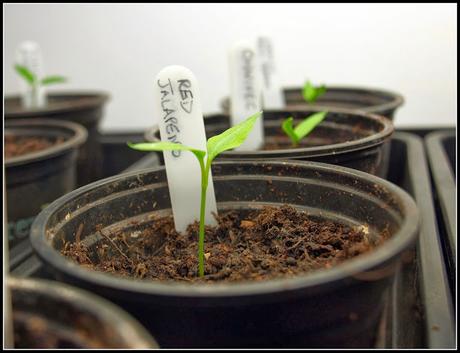
I have been growing chillis for many years now, so I think I can lay claim to a fair bit of expertise. A lot of people assert that you can't successfully grow chillis outdoors in the UK, but I'm afraid they are wrong. I don't have a greenhouse, so all my chillis are grown outdoors. Well, let's be completely honest: they are initially raised from seed indoors, then spend some time in little plastic mini-greenhouses out in the garden before being put out in the open (in pots) for the majority of their lives. It's a system that works for me, and I get plenty of ripe chillis every year. Maybe if you live further North than me (I'm in NE Hampshire), it is more difficult!
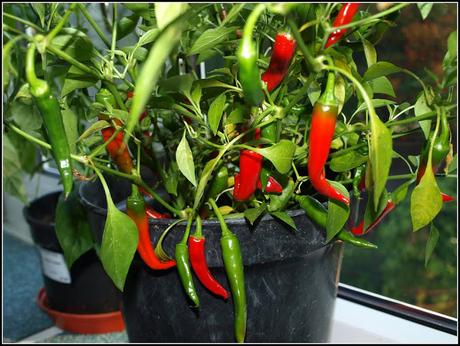
In my early days of growing chillis I didn't even have any special lighting arrangements, but 3 years ago I acquired a "Garland Growlight House", which makes a big difference, allowing me to start seeds a lot earlier.
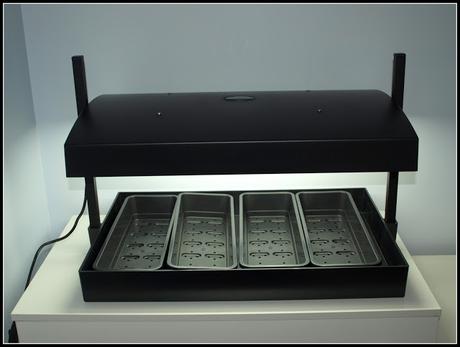
Chilli seedlings grown on a windowsill, no matter which direction it faces, are unlikely to get enough natural light until quite late in the season (in the UK, I mean), and they will go leggy. This can be a problem, because many chilli types (especially the Capsicum Chinense varieties) need a long time to produce ripe fruit. Because of this, many chilli fans want to sow seeds as early as possible, for instance straight after Christmas.
The Growlights provide a good amount of artificial light, which helps a lot, but they are not the complete answer to everything. For a start, they provide only a small amount of heat, so they are not a substitute for a heated propagator. I also don't think it is necessarily a good idea to leave the lights on 24 x 7, because the plants will not get used to a natural day routine, and will be confused when they eventually migrate to their outdoor homes. I usually leave mine on for no more than 12 hours each day. Too much light (especially if the lights are placed too high), can stretch the plants and make them weak and spindly.
Chillis are of course tropical plants and enjoy high temperatures, so it would be ideal to grow them in a heated room. In our house we don't like it to be too warm at night-time and we turn the heating down before going to bed, but naturally the chillis would dispute this! If you can afford it, I suppose it would be good to leave the heating on all the time in the room in which you grow your chillis - or else put them in a heated greenhouse.
So, to answer my own question - when should I sow? Before the Growlights I used to sow round about the middle of March, but after I acquired the lights I started sowing a month or so earlier. For ease of remembering, I took to sowing on or about Valentine's Day (14th Feb). However, I have now concluded that this was not wise. Last year particularly, my chillis (and after them, my tomatoes), really struggled. Worse, they were attacked en masse by aphids before they had had a chance to build up any significant strength, and some succumbed and others remained weak and spindly.
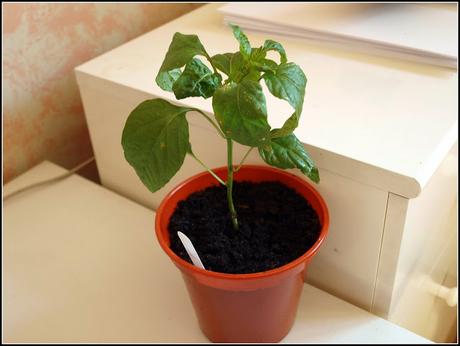
Each year I make a record of what seeds I sow when, and last year (round about June) I wrote on my list "NOTE TO SELF: SOW CHILLIS AND TOMATOES LATER NEXT YEAR!". So, I think I had better follow my own advice. My experience tells me that seeds sown later often produce stronger plants than earlier-sown seeds, and also often catch up the weaker early ones. I am planning to revert to sowing in March, but using the Growlights of course. We'll see how things go this year.
Incidentally, if you think that you won't be able to sow seeds early enough to produce ripe fruit before Autumn frosts kill your plants, maybe you should consider over-wintering some of your mature plants. This year I have kept 12 of the plants I grew from seed last year. Eight of them are definitely alive (many of them looking very healthy), and the other four are "dubious" (to be honest, I don't think they will pull through). Over-wintered plants will produce fruit much earlier than ones grown from seed, so I should be OK this year! Last year one of my best plants was an "Aji Limon", retained from the previous year, so this is definitely a viable technique.
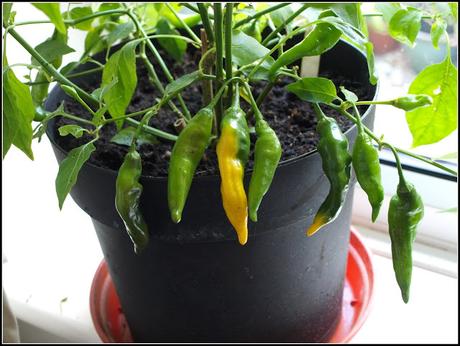
I suppose the conclusion of all this is that you really have to make your own decision. It's unlikely that you will get it right first time, but after a few years you will know what is good for you. Theory is great, up to a point, but it's no substitute for real hands-on experience!
